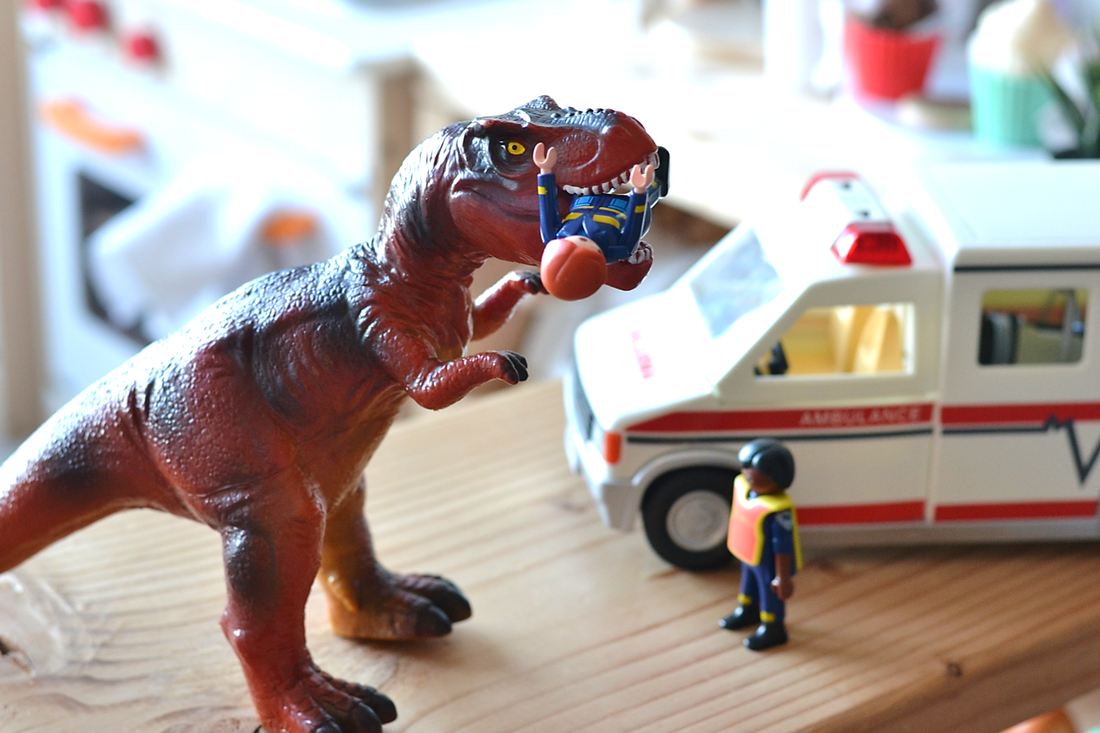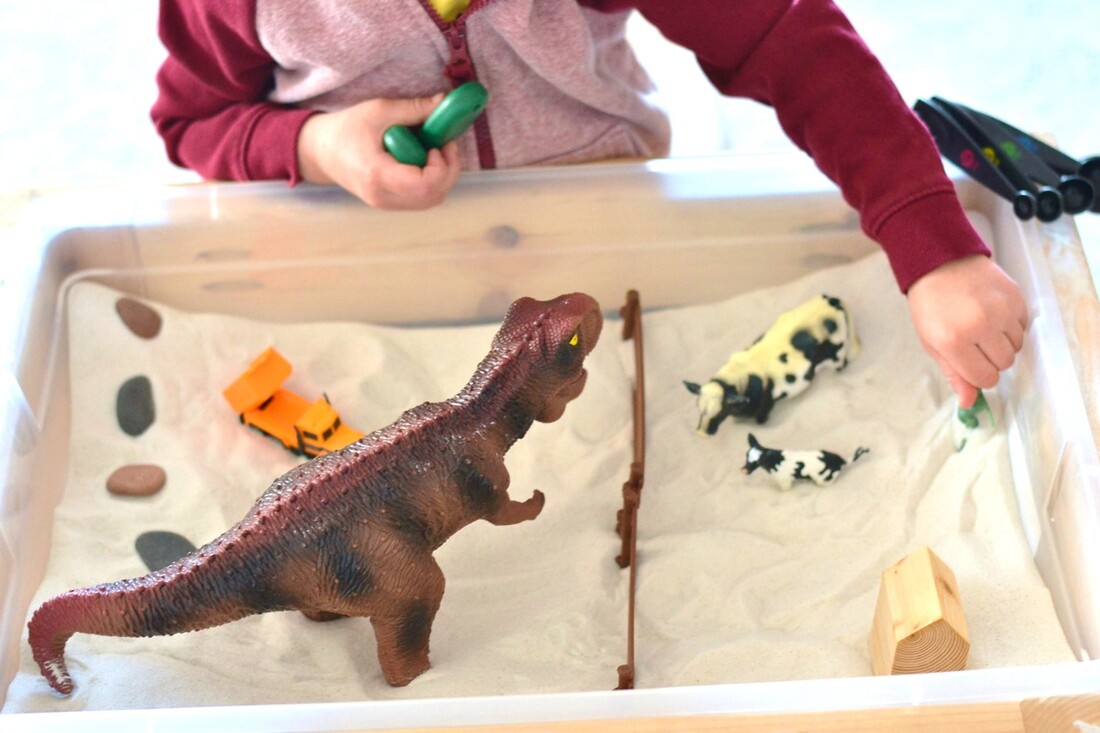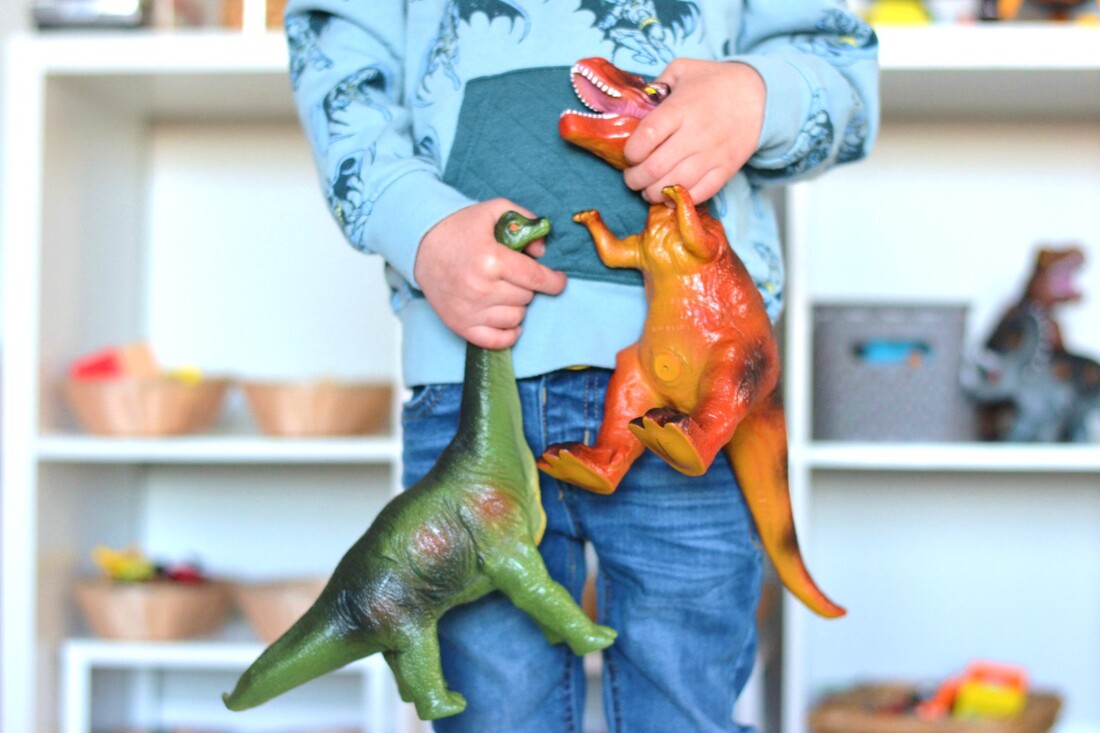|
Is he really ready for the trauma work? What if it gets worse? I don’t know if she can handle it. Is this the right time?
These are real fears that come up for us as therapists who work with trauma, especially when we consider the ethical principle of nonmaleficence or do no harm. AND as trauma therapists we need to have some objectivity and identify whether the fear is due to the child actually not being ready or if the fear is our own. To piece this apart I wanted to share what goes into my decision making about child readiness for EMDR. If we ground ourselves in the 8 phase model of Eye Movement Desensitization and Reprocessing (EMDR) the answers to the questions above will become clearer. Specifically asking ourselves “Are the activities that we are doing with young people in Phase 2 Preparation Phase sufficient enough and is the environment stable enough to warrant moving on into working with trauma memories?” To answer that question we need to look at the work of Dr. Francine Shapiro, the originator and developer of EMDR who gives clear identifications of the factors for readiness for EMDR. Kathleen M. Martin LICSW also developed an amazing Readiness Checklist for Phase 4 of EMDR that I use as an invaluable resource.* So, first we are looking for a strong therapeutic alliance where young people feel safe enough to be honest and truthful about the EMDR process. For young people who are typically not voluntarily signing up to do trauma work (as adults are) and are brought in by a parent, it may take a longer period of time to build the therapeutic alliance. Next we consider if we as therapists have a thorough enough history of the presenting problem, negative cognitions, and themes. We need to have a clear understanding of the order of progression through the trauma targets and also identify if there are any secondary gains that need to be identified and addressed. As Play Therapists we can gather rich information and data from non directive forms of Play Therapy such as Child Centered Play Therapy. By understanding themes in the play we can develop hypotheses about how these themes relate to their Negative Cognitions for EMDR work. Next we look at stability, which is so essential to consider for young people. Young people may be going back into a significantly chaotic, traumatic, or abusive home environment which may not be supportive of trauma work. Or there may be other environmental factors that would indicate putting a pause on trauma desensitization and reprocessing work such as a teen just breaking up with a partner, a child losing a family member, parents announcing a divorce, a large test coming up, or any other sort of destabilization or stressful events that would be negatively impacted if the child were dysregulated from trauma reprocessing. Also consider other timing issues such as therapist or client vacation or extended periods of absence. We want to make sure that we are available to our clients during Phase 4 of EMDR and there are not going to be any extended periods where a client does not have access to their therapist. Another issue to consider is if a client has difficulty with consistent attendance. This is one of my big factors for beginning trauma work with children, because if they are missing 1-2 or more sessions per month our trauma processing will not be consistent. We also want to screen for dissociation unless you are specifically trained and have received consultation in working with EMDR and dissociation. My go to screenings are the Adolescent Dissociative Experiences Scale-II and the Child Dissociative Checklist - Version 3, which is a parent report for younger children. So if all of those factors are met then we look at the activities we are doing with clients in sessions. First we need to make sure that young people have an age appropriate idea of what EMDR is. We also need to make sure that young people have all their questions answered about what EMDR might be like. Oftentimes parents get the longer more in depth explanation and younger people can have a shorter and simpler explanation or a metaphor. We also want to make sure parents have a clear understanding of what symptoms may be like after reprocessing and how to support their child after a trauma session. There also needs to be some familiarity with the materials and types of scaling questions that will be used in Phases 3-6. For example we don’t want the first time a child uses the sand tray to be the first time they enter Phase 4. This new type of material or activity can actually create a neuroception of danger which is contraindicated for starting Phase 4. We also want young people to have ample time to experiment with different kinds of Bilateral Stimulation (BLS) to get used to what type feels best for them. During the preparation phase we also want to make sure we are playing games and engaging in activities that label feelings, increase emotional literacy, use scaling, and help identify body sensations. If young people are not able to stay within their window of tolerance, have dual awareness of the past and present, or cannot engage in state change from dysregulated to regulated (both in and out of session) then more preparation phase work is needed. We need to make sure that young people have access to feelings (not over accessing or repressing), can label them, can identify the level of feeling, and can connect to their body sensations before moving forward. Again, if you are nodding and all of this looks good and seems right then it is likely that a child is ready to enter Phases 3-8 of EMDR. You know your client best and ensuring factors for readiness are met, reliance on your training, and using your clinical judgement is key to make the official decision. If you are still unsure then you can start with an easier or “softer” target to see how young people handle the BLS and reprocessing. This may be a milder trauma target or a present day trigger. Want to know more about trauma, EMDR, and children? Check out my training on Playing Through Phase 2: Combining Bibliotherapy and Play Therapy for Phase 2 of EMDR. What else do you look for as a "green light" for trauma work? Drop a comment below! *If you google this description you can easily find the Readiness Checklist for Phase 4 of EMDR sheet Kathleen M. Martin LICSW also developed. It is not hosted on a website and clicking on the link lets you automatically download the word document.
0 Comments
Combining Eye Movement Desensitization and Reprocessing (EMDR) and Play Therapy is one of my most favorite ways to work with young people!
If you don’t know about EMDR, it is an 8 phase model of therapy for the treatment of trauma developed by Dr. Francine Shapiro. As an EMDRIA Approved Consultant I love to talk with other therapists about how engage children in trauma work combining EMDR and Play Therapy techniques to make EMDR for children developmentally appropriate. I wanted to share the top 5 things you need to know about working with children, trauma and EMDR if you are thinking about getting trained in EMDR, or are already trained but aren’t quite sure where to start. EMDR Treats Trauma EMDR is based on the theory of Adaptive Information Processing (AIP) which asserts that psychopathology is due to memory processes of maladaptive encoding and/or incomplete processing of life experiences that are traumatic, disturbing, or adverse. This freezes the trauma in a state-specific form (with all the sights, sounds, tastes, smells, physiological reactions, and body sensations) in its own neural network, which makes it unable to connect with other memory networks that hold adaptive information. So, for example, when someone who is the victim of a dog bite comes into contact with a dog (a very lovely safe dog), they are not able to have an understanding (linking to adaptive information) that they have met a TON of safe and loveable dogs and only one dangerous one. Instead the frozen, maladaptively encoded, and incompletely processed neural network of the trauma is activated by the trigger of seeing a dog in the here and now and now all dogs seem extremely dangerous and the body begins to have a trauma response. When someone is triggered, the past (frozen neural network) becomes present. This maladaptive encoding and/or incomplete processing impacts one's ability to integrate the experiences in an adaptive manner. The very real threat of the dog in the past feels and experienced the exact same way in the present. Through the 8 phase model of EMDR a three pronged approach is used to target the past, present, and future. EMDR facilitates the resumption of normal information processing and integration by desensitizing the trauma and reprocessing the trauma memory to link up the frozen neural networks to networks that hold adaptive information. SO COOL. If you are curious about EMDR you can learn more it HERE! EMDR treats “small t traumas” When I was a bitty baby therapist and first started out in the field I heard the notion that most kids that present for therapy have some form of trauma, annnnd I couldn’t quite wrap my head around it. The majority of my intakes weren’t endorsing events like major car crashes, domestic violence, traumatic weather events, or physical or sexual abuse. At the same time I want to take great care to express that there are many things that clients don’t disclose, for many reasons, at intake that are happening in their lives or have happened. And in my practice today? It is very rare that someone comes into my office that doesn’t have some form of trauma. Wait…. Did I get a whole new caseload? Start working at a wildly different practice? Nope! My definition of trauma changed as I learned more about the neuroscience of trauma and theories such as Adaptive Information Processing. As I have used the powers of Play Therapy and EMDR to treat a wide range of traumatic events I have seen the transformational change reprocessing and integrating stuck and unprocessed memories has on functioning and level of symptoms. When we can stop chasing behavior and get to the root of the difficulties (ie a likely memory stuck and frozen in the neural network getting triggered by something in the present, causing the past to be present) the behaviors are no longer necessary. This is because the trauma doesn’t feel like it is happening in the here and now when a child is faced with a trauma trigger. When we think about current behaviors as adaptive given how the body is remembering and experiencing the trauma when triggered - the behaviors make sense. And it makes even more sense knowing that some trauma memories can trigger implicit memories (ie a "felt sense", somatic, or emotion memory) not just explicit (ie the things we consciously remember - pictures, sounds, tastes, etc.). This means that young people may FEEL a certain way (triggered, scared, unsafe, angry, sad, etc.) but aren't able to consciously connect it to a past trauma or trauma trigger. Trauma comes in all forms, and Dr. Shapiro differentiates big “T” trauma from small “t” trauma. She notes that Big “T” Trauma includes events that caused actual or threatened injury or sexual violation. Shapiro states that Small “t” Trauma are events that are emotionally distressing. She states that both Big “T” and Small “t” Trauma can both have comparable long lasting negative effects and can become the basis of current dysfunctional reactions or mental health difficulties. So, through training and experience I have witnessed the painful long term effects of events such as bullying, becoming ill when separated from a parent, parents minimizing, yelling, or name calling. And, I see the transformation that can happen once these memories are linked with the neural networks that hold adaptive information. So given this information - if you see kids there are definitely a wide variety of young people that will walk in your door with both big “T” trauma and small “t” trauma that can benefit greatly from this approach! EMDR needs to be done by a therapist fully trained in EMDR Hopefully this one is given but I wanted to detail out what the process is for being fully trained in EMDR. EMDR International Association (EMDRIA) has outlined the criteria for someone to be fully trained in EMDR. Usually this training is 40 hours long as well as 10 consultation hours on your use of EMDR with clients. There are some programs out there that will do an introduction EMDR program in a day, books that you can get, or other ways that you can become familiar with EMDR. However, I truly believe that being trained fully by an EMDRIA accredited program is not only a good idea but also ethical and necessary! So you are either one of two people - you know all about EMDR and are fully trained and totally are picking up what I am putting down OR you know a little bit about EMDR or maybe nothing at all. If the latter is you, you can check out how and where to take this amazing training HERE! Annnd if children are a large part of the population you see there are trainers that specialize more in working with children, so seeking out someone with this expertise for your initial training could be something to consider! Children benefit from EMDR I can’t tell you how many professionals I run into that were fully trained in EMDR with little to no training on how to adapt the protocol to use in their work with children. And I get it, there is SO much information to cover about trauma, AIP, and the EMDR protocol that when you put in some demonstrations, time for practice, and trying to highlight special topics there is not much time left for anything else. BUT because of this some draw the conclusion that it can’t really be done with children. OR it feels really cumbersome and complicated to translate the 8 phases into something that doesn’t feel too scary, overwhelming, or inappropriate developmentally for a young person. So here is why I think it is absolutely necessary to do EMDR work with children (who are a good fit of course)- first looking at the neuroscience of trauma! Neural circuits that are used over and over are strengthened. The saying “neurons that fire together wire together” by Donald Hebb is absolutely true. It is also a “use it or lose it” kind of thing. So - neural circuits that are not used are dropped or pruned. There are two waves of branching and connecting that are followed by a reduction and pruning - ages birth through three and ages 11/12 years old. So what this means is trauma that occurs in childhood can actually hardwire in a fight/flight/freeze trauma response rather than wiring for prosocial connection and engagement. If we can heal trauma before these crucial periods of neural cropping it sets children's brains up for success in their later teens and adult life. AND because children have less dense neural networks (ie less memories, experiences, connections) they actually process faster than adults! Furthermore research has found that EMDR can be used effectively with children four years old and up to treat trauma symptoms. And apart from the pages in a research journal I have seen this firsthand, and it is AMAZING! Kids can get it, they can engage, and they can do this hard work! EMDR must be adapted to use with children Most children need minor to significant adaptations to the standard protocol to be able to work through the 8 phases of the protocol. And typically the younger the child the more adaptations may be needed. And, to be honest if you ask a 5 year old to focus on any one thing while just sitting still you are not likely to be successful, especially with trauma work. EMDR and trauma work with children can be fun, engaging, and done with cooperation and willingness. Usually this means games, sand tray, combining with Play Therapy, bibliotherapy, or any number of different interactive activities. EMDR with children also means shifting how we administer Bilateral Simulation (BLS) to make it fun and engaging and being more visual with how to scale SUDS and VoC. It also means having a longer Phase 2 Preparation to get young people used to the materials they will be using and tasks they need to engage in during the desensitization and reprocessing phases. Now, your question might be - what next? How do I get started? I always suggest getting extra training from an EMDRIA CE provider who works with children as well as seeking out consultation with someone who specializes in working with kids. I also wanted to share my three favorite books to help you start to begin to put it all together! The first is from Ana Gomez - EMDR Therapy and Adjunct Approaches with Children: Complex Trauma, Attachment, and Dissociation. Ana takes you through step by step with the specific activities, games, and techniques she uses within the 8 phase model. Next is the book EMDR With Children in the Playroom: An Integrated Approach by Ann Beckley-Forest and Annie Monaco. This book does an excellent job of how to integrate EMDR with a prescriptive Play Therapy approach and use bilateral stimulation within Play Therapy. Lastly is Small Wonders: Healing Childhood Trauma with EMDR by Dr. Joan Lovett. Dr. Lovett applies a storytelling modeling of EMDR for work with younger children. Want to know more about trauma, EMDR, and children? Check out my training on Playing Through Phase 2: Combining Bibliotherapy and Play Therapy for Phase 2 of EMDR. Now what about you? If you are EMDR trained and work with children what do YOU want therapists to know? If you are thinking about getting trained in EMDR what questions do you have? Leave a comment below! Have you ever had a client walk into session, SO EXCITED, holding one of their prized possessions from home? They have been thinking about your session for DAYS and even put their toy right by the door so they wouldn’t forget it before they left!
Well...if that has never happened to you in office it has most definitely happened to you while doing Tele-Play! I mean, for most kids (even if they have a Play Therapy Kit) they definitely want to use their toys too during play. So...um...how do we approach this? Does using toys from home in Play Therapy matter either way? Well...the answer to this, as with most things, is - it depends! Let’s start with theory. Depending on what theory you are working from might hold a lot of clues to how to approach this. If your theory states that the therapist will be selecting all the toys and deciding how they will be played with then there might be some more rules or restrictions. OR if theory only restricts to certain specific toys and activities then let theory lead the way! If we look at Child Centered Play Therapy, Dr. Garry Landreth’s text Play Therapy and the Art of the Relationship has one general rule, which is only allowing items in the playroom that you would normally select for the playroom. Not so sure what that means? This article HERE from the University of North Texas does an excellent job of spelling out criteria for selecting toys and materials, highlighting the three categories of toys, and giving a sample list of a fully equipped playroom. So long story short - the dinosaur, baby doll, race car, or lego ship are totally invited in to play. The Xbox or DS? Not so much. My take on this is that if children think about, in advance, their time with you and are planning out what they specifically want to do, whatever they bring has special meaning, purpose, and intention. AND could it be that that they have a special theme they want to express that they aren’t sure you have a toy that would exactly cover it? Because of this rarely do I not allow a child to bring into the Playroom and engage with a toy they have brought from home. I usually say something like “I see you brought something special from home”. Then they usually tell me what it is and what they would like to do with it. From there I set some structure and say something along the lines of “Well I want you to know that what you bring in with you must leave with you today! Your dinosaur would be pretty lonely if he had to hang out with me for the rest of the week until I see you next!” This statement can be especially important if a client brings in a toy that is similar to yours (ie a lego character or miniature) to really make sure that they are leaving with all of their belongings. I have also had young people bring in the EXACT same miniature of something I have! It gets a little trickier from there - but OH what a treasure trove of potential themes! Now one of the things I appreciate about toys from home when doing in office therapy is the space that is naturally created and distance from the play theme as the client leaves the office. They stop playing, gather their things, head to the waiting room, take the elevator down to the parking area (at least in my office!) and have a car ride home before the toy can be really played with again. This creates some distance and safety from the play themes they have been working through in your office. The danger with toys from home in Tele-Play Therapy is that the camera will shut off, the client will continue playing out the play theme without the support and containment of the therapy process AND someone will walk in. Maybe it’s a brother that completely takes over the storyline of the play. Or maybe a sister teases and makes fun of the toys or story. Maybe it is a parent who is frustrated if there is a mess, they didn’t do their homework, or the way they are playing with the toys. Here lies the danger that these dynamics are going to come in and affect a play theme and the processing that has just been done. SO because of this I am a HUGE fan of creating a bin of toys that the client only plays with during Play Therapy sessions and then returns to the bin together at the end of the session creating containment (either the client or parent). However, there are some young people that can’t afford or do not agree to having a separate toy bin. For these clients I also think there is some benefit from creating an intentional clean up time and space from the toys for at least a little bit. Maybe to get a snack, maybe play outside for a bit, or play with some other toys before coming back to the toys used during therapy. What about you? What does your theory say about toys from home? Drop a comment below! Everyone needs a rainbow! Even on a cloudy or gloomy day we can always cultivate a rainbow from within.
The metaphor of a rainbow is so powerful – the bright beautiful colors after the storm. Hope, healing, acceptance. Sometimes it can be a symbol of better things to come. You know, somewhere over the rainbow! Oh, and don’t most rainbows have a pot of gold at the end? So considering all of this pairing rainbows, breathing, and mindfulness seems like a winning combination! I want to share three ways to use rainbows for mindfulness and deep breaths! The awesome thing about these activities is that they all have printables that you can use for directive play therapy in office OR email to clients if you are doing Tele-Play! Rainbow Bubble Breathing This breathing exercise is fantastic for smaller children or those new to deep breathing. One large bubble is used to symbolize a deep breath in and two smaller to symbolize slower smaller breaths…for all the colors of the rainbow! Grab the free download from the Branch Habitat Blog! Rainbow Meditation Dawn Selander shares her printable for her rainbow meditation for kids! She has a characteristic that goes with each color (red = physical, orange = emotional, yellow = personal, etc.) and provides a meditation script that goes through the entire rainbow. The concepts and language are great from preschoolers up to teens! Rainbow Breath This printable from Monkinya has children trace and breathe in a color and breathe out worry for all colors of the rainbow. This is an excellent activity for Cognitive Behavioral Play Therapy where you are shifting cognitions, putting the difficult thoughts out of your mind, and being intentional about what thoughts occupy your brain! So there you have it! Three ways to use rainbow breathing in your therapy practice! What about you? Do you have any rainbow techniques that you like to use in your practice with children? Drop a link or comment below! Looking for more resources for regulation? Check out my training on Keep Calm and Regulate On: Play Therapy and the Neuroscience of Emotional Regulation! |
Hi, there!I'm Ann Meehan, an LPCC, Loading... Archives
July 2024
Categories
All
|
Privacy Policies | Terms of Use | Disclaimer
Contact
[email protected] | Copyright Meehan Mental Health Services 2022
Contact
[email protected] | Copyright Meehan Mental Health Services 2022








